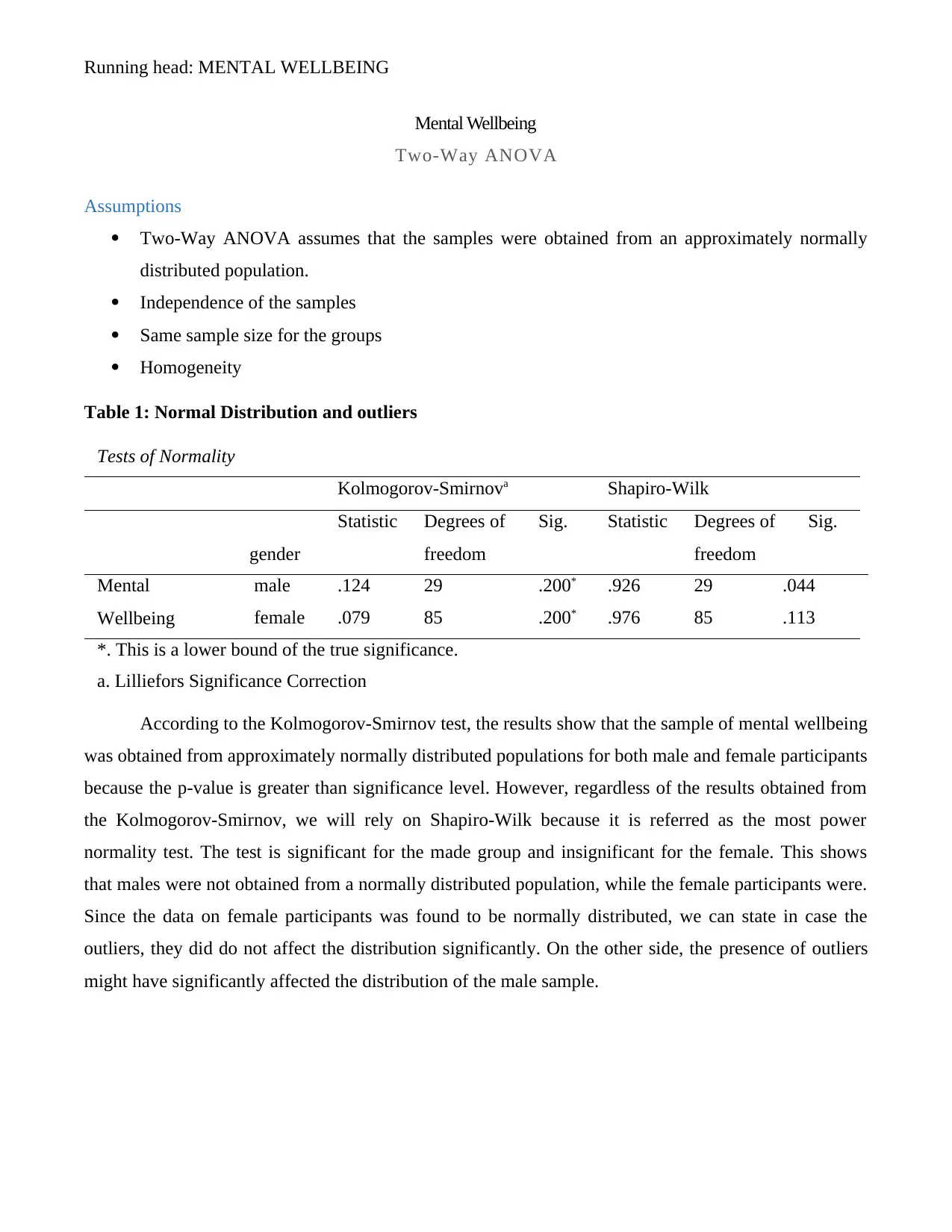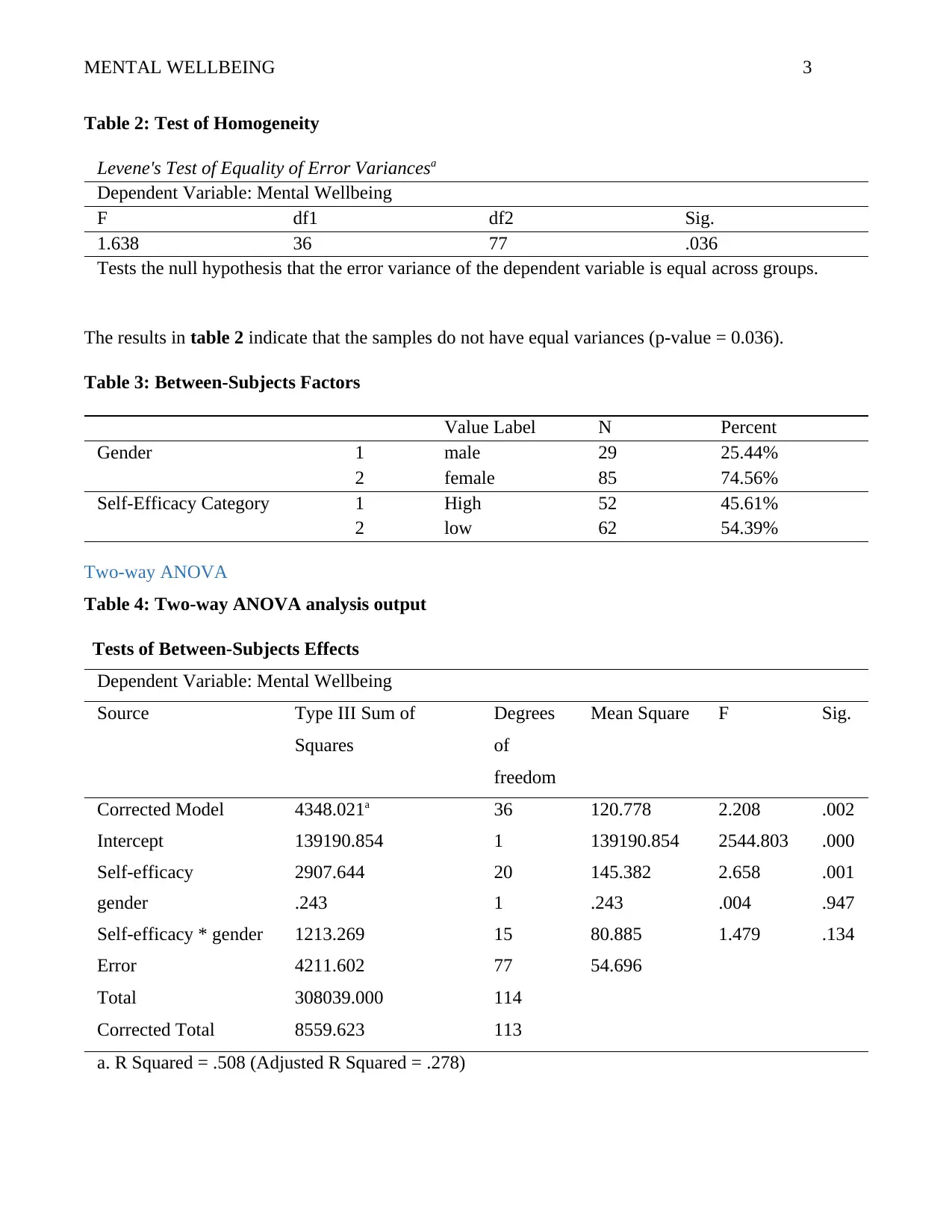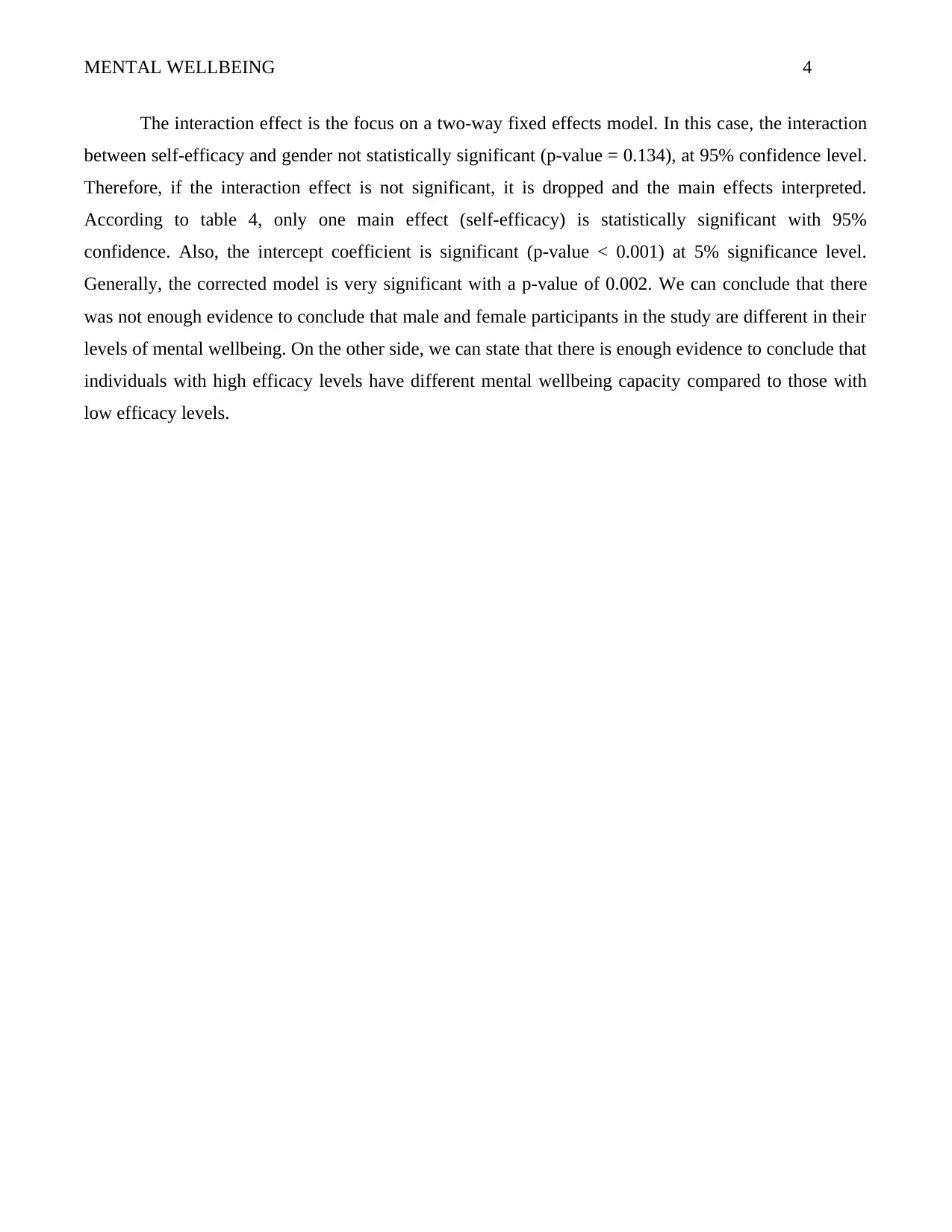Mental Wellbeing Analysis: Two-Way ANOVA, Data Interpretation Report
VerifiedAdded on 2020/04/15
|4
|607
|57
Homework Assignment
AI Summary
This assignment presents a statistical analysis of mental wellbeing using a two-way ANOVA. The analysis investigates the impact of self-efficacy and gender on mental wellbeing. The study begins by outlining the assumptions of the two-way ANOVA, including normality, independence, and homogeneity of variance. Tests such as the Kolmogorov-Smirnov and Shapiro-Wilk are used to assess normality. Levene's test is employed to evaluate the homogeneity of variances. The results, presented in tables, reveal that while some assumptions are met, others are not. The ANOVA results indicate a significant main effect for self-efficacy, suggesting that individuals with high self-efficacy have different levels of mental wellbeing compared to those with low self-efficacy. However, the interaction effect between self-efficacy and gender is not statistically significant. The report concludes that there is no evidence to suggest that male and female participants differ in their mental wellbeing levels, but there is strong evidence of a relationship between self-efficacy and mental wellbeing.
1 out of 4











![[object Object]](/_next/static/media/star-bottom.7253800d.svg)